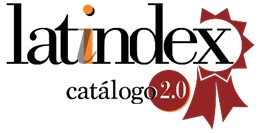Mathematical modelling routes supported by technology in the learning of linear algebra: a study with Costa Rican undergraduate students
DOI:
https://doi.org/10.48489/quadrante.23721Keywords:
linear algebra, undergraduate students, mathematical modelling routes, computer model, spreadsheetAbstract
Mathematical modelling is a significant and productive context for teaching linear algebra, favoring students’ learning of concepts and modelling competencies, often neglected in undergraduate mathematics. This study aims to characterize the modelling routes performed and the competencies put into practice by Costa Rican undergraduate students in a linear algebra course, when solving a mathematical modelling task involving the concepts of spanning set and basis of a vector subspace, using the Excel spreadsheet. Data collection included participant observation of the students’ discussions, their written work on the task, and the Excel files produced. The analysis reveals incomplete and complete modelling routes performed by the students, in which they used the concepts of linear combination, span, standard and non-standard basis to build models. The use of technology influenced the way students obtained mathematical and/or real results from their mathematical model. In complete modelling routes, the computer model has driven several transitions within the modelling cycle, namely between computational, mathematical, and real results, enhancing the modelling processes. In addition, the spreadsheet performed two main functions, calculating and simulating, allowing the groups who used it to assess the effectiveness of their mathematical and computer models and validate them against the real situation.
References
Alsina, C. (2007). Teaching applications and modelling at tertiary level. In W. Blum, P. Galbraith, H. W. Henn, & M. Niss (Eds.), Modelling and applications in mathematics education: The 14th ICMI study (pp. 469–474). New York, NY: Springer. https://doi.org/10.1007/978-0-387-29822-1
Blum, W. (2015). Quality teaching of mathematical modelling: What do we know, what can we do? In S. J. Cho (Ed.), Proceedings of the 12th International Congress on Mathematical Education - Intellectual and Attitudinal Challenges (pp. 73-96). New York, NY: Springer. https://doi.org/10.1007/978-3-319-12688-3_9
Blum, W., & Leiß, D. (2007). How do students and teachers deal with modelling problems? In C. Haines, P. L. Galbraith, W. Blum, & S. Khan (Eds), Mathematical modelling (ICTMA 12): Education, engineering and economics (pp. 222-231). Chichester, UK.: Horwood.
Borromeo Ferri, R. (2007). Modelling problems from a cognitive perspective. In C. Haines, P. Galbraith, W. Blum, & S. Khan (Eds.), Mathematical modelling (ICTMA 12): Education, engineering and economics (pp. 260-270). Chichester, UK.: Horwood.
Borromeo Ferri, R. (2018). Learning how to teach mathematical modelling in school and teacher education. Cham, Switzerland: Springer. https://doi.org/10.1007/978-3-319-68072-9
Cárcamo, A., Gómez, J., & Fortuny, J. (2016). Mathematical modelling in engineering: A proposal to introduce linear algebra concepts. Journal of Technology and Science Education (JOTSE), 6(1), 62–70. https://doi.org/10.3926/jotse.177
Chaamwe, N., & Shumba, L. (2016). Spreadsheets: A tool for e-learning – A case of matrices in Microsoft Excel. International Journal of Information and Education Technology, 6(7), 570–575. https://doi.org/10.7763/IJIET.2016.V6.753
Cohen, L., Manion, L., & Morrinson, K. (2007). Research methods in education (6th ed.). New York, NY: Routledge. https://doi.org/10.4236/ahs.2015.44023
Costa, V. A., & Rossignoli, R. (2017). Enseñanza del álgebra lineal en una facultad de ingeniería: Aspectos metodológicos y didácticos. Revista Educación en Ingeniería, 12(23), 49-55. https://doi.org/10.26507/rei.v12n23.734
Czocher, J. (2018). How does validating activity contribute to the modelling process? Educational Studies in Mathematics, 99, 137–159. https://doi.org/10.1007/s10649-018-9833-4
Dogan-Dunlap, H. (2010). Linear algebra students’ modes of reasoning: Geometric representations. Linear Algebra and its Applications, 432(8), 2141–2159. https://doi.org/10.1016/j.laa.2009.08.037
Galbraith, P., & Stillman, G. (2006). A framework for identifying student blockages during transitions in the modelling process. ZDM Mathematics Education, 38(2), 143–162. https://doi.org/10.1007/BF02655886
Greefrath, G. (2011). Using technologies: New possibilities of teaching and learning modelling—Overview. In G. Kaiser, W. Blum, R. Borromeo Ferri, & G. Stillman (Eds.), Trends in teaching and learning of mathematical modelling: ICTMA 14 (pp. 301–304). Dordrecht: Springer. https://doi.org/10.1007/978-94-007-0910-2_30
Greefrath, G., Hertleif, C., & Siller, H.-S. (2018). Mathematical modelling with digital tools – A quantitative study on mathematising with dynamic geometry software. ZDM Mathematics Education, 50, 233–244. https://doi.org/10.1007/s11858-018-0924-6
Haspekian, M. (2005). An ‘instrumental approach’ to study the integration of a computer tool into mathematics teaching: The case of spreadsheets. International Journal of Computers for Mathematical Learning, 10(2), 109–141. https://doi.org/10.1007/s10758-005-0395-z
Kaiser, G. & Sriraman, B. (2006). A global survey of international perspectives on modelling in mathematics education. ZDM Mathematics Education, 38, 302–310. https://doi.org/10.1007/BF02652813
Maaβ, K. (2006). What are modelling competencies? ZDM Mathematics Education, 38(2), 113–142. https://doi.org/10.1007/BF02655885
Niss, M., Blum, W., & Galbraith, P. (2007). Introduction. In W. Blum, P. Galbraith, H.-W. Henn, & M. Niss (Eds.), Modelling and applications in mathematics education: The 14th ICMI study (pp. 3–32). New York, NY: Springer. https://doi.org/10.1007/978-0-387-29822-1
Rensaa, R. J. (2017). Approaches to learning of linear algebra among engineering students. In T. Dooley & G. Gueudet (Eds.), Proceedings of the 10th Congress of the European Society for Research in Mathematics Education (CERME10) (pp. 2241-2249). Dublin: DCU Institute of Education & ERME.
Rensaa, R., Hogstad, N., & Monaghan, J. (2020). Perspectives and reflections on teaching linear algebra. Teaching Mathematics and its Applications, 39(4), 296–309. https://doi.org/10.1093/teamat/hraa002
Sánchez, J. (2019). Carta al estudiante de curso MA1004: I semestre. Universidad de Costa Rica.
Siller, H.-S., & Greefrath, G. (2010). Mathematical modelling in class regarding to technology. In V. Durand-Guerrier, S. Soury-Lavergne, & F. Arzarello (Eds.), Proceedings of the 6th Congress of the European Society for Research in Mathematics Education (CERME 6) (pp. 2136–2145). Lyon: Institute National de Recherche Pédagogique and ERME.
Stewart, S., Andrews-Larson, C., & Zandieh, M. (2019). Linear algebra teaching and learning: Themes from recent research and evolving research priorities. ZDM Mathematics Education, 51, 1017–1030. https://doi.org/10.1007/s11858-019-01104-1
Stewart, S., & Thomas, M. O. J. (2010). Student learning of basis, span and linear independence in linear algebra. International Journal of Mathematical Education in Science and Technology, 41(2), 173–188. https://doi.org/10.1080/00207390903399620
Trigueros, M., & Possani, E. (2013). Using an economics model for teaching linear algebra. Linear Algebra and its Applications, 438(4), 1779–1792. https://doi.org/10.1016/j.laa.2011.04.009
Wawro, M., Rasmussen, C., Zandieh, M., Sweeney, G. F., & Larson, C. (2012). An inquiry-oriented approach to span and linear independence: The case of the magic carpet ride sequence. PRIMUS, 22(8), 577–599. https://doi.org/10.1080/10511970.2012.667516










